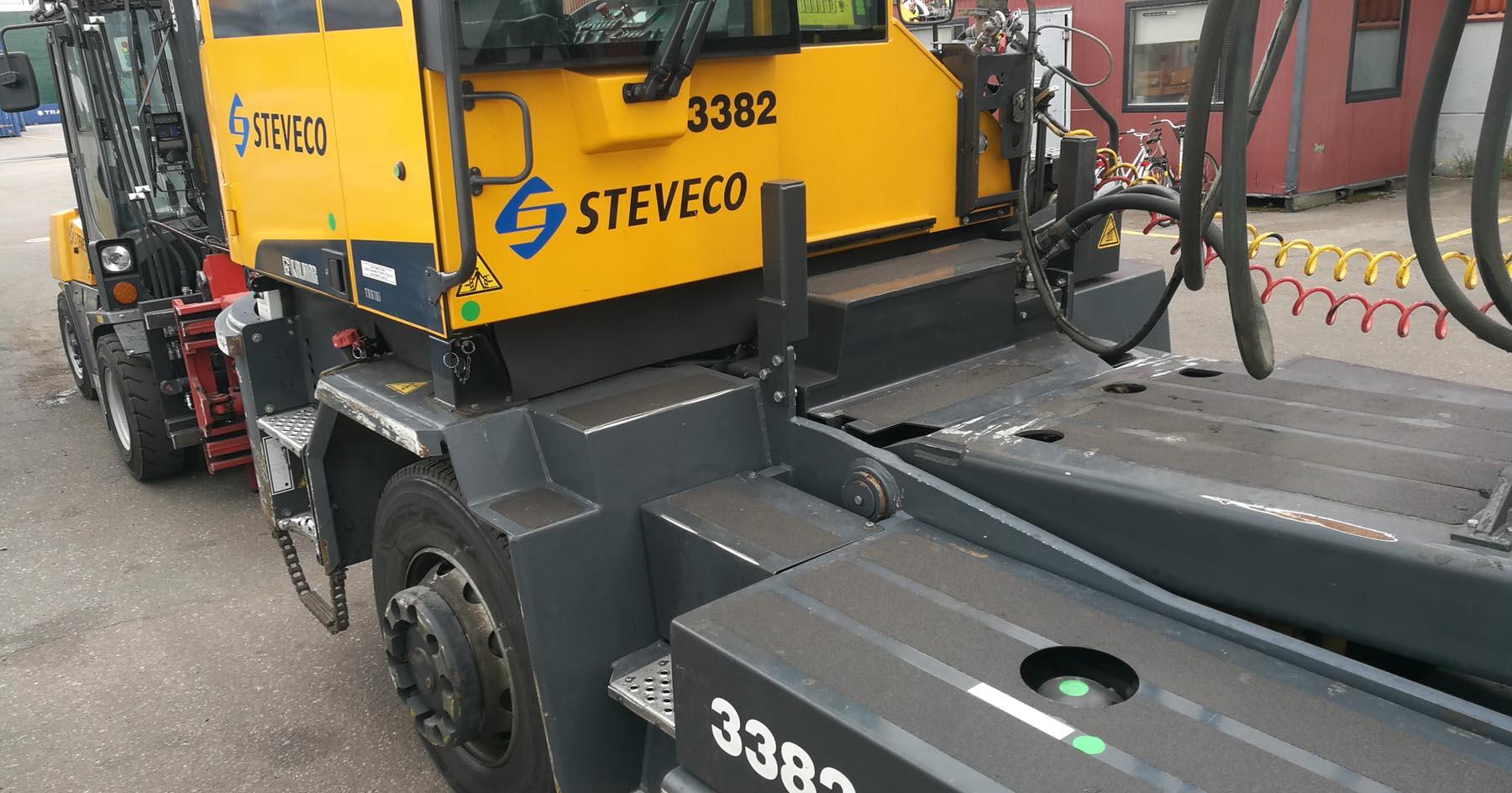Immediate emission reductions with renewable fuel

In September, renewable fuel oil was put into test use in the machines at the Port of Hietanen. By replacing part of the fossil fuel with renewable fuel, it is possible to quickly reduce greenhouse gas emissions from work machines.
A significant part of Steveco's environmental impact consists of emissions from work machines; that is, fossil fuel oil. The use of hydrotreated vegetable oil (HVO), sometimes referred to as Renewable Diesel, in work machines is currently being tested at the Port of Hietanen. Renewable fuel oil is typically made from bio-based waste or residues. It reduces greenhouse gas emissions by about 90 per cent compared to fossil fuel oil.
"Renewable fuel oil includes some uncertainties. We are gathering experience with our pilot project on how this fuel works in selected work machines," says Steveco's development director Heikki Jääskeläinen.
The work machines selected for the pilot are forklifts and terminal tractors. The commonality of these machines is that the engine manufacturers allow renewable fuel oil to be used in them.
"Currently, not all manufacturers permit it, so it doesn't make sense to include those machines in this test," Jääskeläinen points out.
Positive experiences
According to Jääskeläinen, the experiences from the pilot project,started in September, have been positive. The biggest additional costs have come from the higher price of renewable fuel oil and the halving of the maintenance interval.
"We don't know the difference in consumption yet, but that will become clear as the testing progresses," Jääskeläinen clarifies.
The goal is lower emissions ASAP
By using renewable fuel oil, Steveco aims for immediate emissions reduction. According to Jääskeläinen, the results of the pilot will be followed with great interest, but with a cool head and careful planning of further measures.
"If the experiment goes well, we will seriously consider expanding usage to all machines for which the fuel is suitable. In practice, this means about 15 per cent of the entire machine fleet," Jääskeläinen estimates.
He hopes that in the future, renewable fuels will be less specific to engine types than they are now. Their wider availability would benefit all of society.
"Achieving Finland's carbon neutrality goals requires that we quickly find ways to reduce the emissions of the current stock of work machines," he says.
"Renewing the machinery is slow and expensive. That's why the usability of alternative fuels even in older machines is crucial."
The operating time of electric work machines falls short of optimal
Since 2018, electric work machines have been tested annually at various Steveco sites. So far, Jääskeläinen does not see a realistic possibility for their introduction.
"The biggest challenge is the continuous operating time. Both we and our customers have service efficiency requirements that, unfortunately, electric work machines do not yet meet," he says.
In order for electric machines to be a viable alternative to current machines, their continuous operating time should cover two work shifts.
"At the moment, we can reach a maximum of 25 per cent of this," Jääskeläinen says.
"Of course, the construction of the charging infrastructure and the capacity of the electrical network, if a large number of machines were to be charged at the same time, are further questions. However, as long as the continuous operating time of the machines remains far from the goal, this is not a critical problem."
Text: Annukka Ollitervo Photos: Topi Kiri
About Author

Satama
SATAMA is our customer magazine. it is published twice a year in Finnish.
